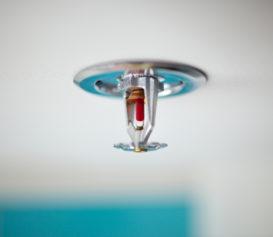It’s time to set this year’s property ops priorities in motion – for NYC owners and managers, that includes building and executing compliance action plans for some of the newest and most challenging regulations.
If you’re not familiar with these regulations and programs, we’ve put together a super-quick summary video for you here:
Read on for more details about each of the 4 projects, and specific steps you can take (both in InCheck and in general) to ensure your company is compliant this year and beyond.
OATH Amnesty – FAIRER Fines
OATH’s FAIRER program is a limited-time amnesty program offering up to 75% reductions on outstanding ECB-related penalties. Amnesty programs are usually only offered once every couple of years, and it’s absolutely worth taking advantage of to clear older, open violations.
Taking Action
- Find out if any OATH fines are outstanding across your portfolio, and relevant to your business (DOB, FDNY related or targeted towards a known entity as the named respondent). You can do this in your InCheck or SiteCompli account on this page.
- Determine which fines are eligible for OATH Amnesty. The team at Cohen, Hochman & Allen outlined the FAIRER violation guidelines here. You can also enter individual summons numbers into OATH’s payment portal to see eligibility and total reduction information.
- Pay them before March 20, 2022 to take advantage of the reduction. You can do this directly through OATH’s payment portal, or coordinate with compliance experts (like the team at Cohen, Hochman & Allen).
However you decide to handle the FAIRER program, just make sure you do it by March 20, 2022. The city council’s law mandating this program allowed for one 90-day extension, which has already been granted. We recommend adding a task in your InCheck account for at least a week before this date to review open violations and ensure any eligible ones have been taken care of via the program.
Local Law 55 Inspections & Related Work
Local Law 55 isn’t new, but it is required every year. Specifically, owners are required to inspect each unit for allergen hazards – things like mold, pests, and other issues. In addition to the inspections, owners are required to follow safe work practices & specific guidelines for resolving any found issues. For those reasons (and to protect your team against any possible audits from city agencies) documentation here is critical.
Taking Action
- Plan out your inspection schedule. Depending on your portfolio size and team responsible for performing inspections, you may want to treat this as a year-long project or inspect all units during a shorter range of time. Weigh this requirement against other must-do work, and don’t forget – you can also check other things like smoke and carbon monoxide detectors once you’re inside a unit.
- Build in automation based on your plan. If you’re using InCheck, you can deploy Local Law 55 inspection work all at once, or only to specific properties or property groups. We’re happy to walk you through how other teams are attacking this requirement, and how you can outline that plan in your InCheck account.
- Record and perform follow-ups. This law goes beyond the inspection. Specifically, it’s critical to document all follow-up work, even if it’s being performed by an outside vendor. InCheck can automatically trigger and assign follow-ups based on any allergen hazards found onsite, so you’ve already taken the first step to resolving open issues.
The more automated and repeatable your process is, the easier it’ll be for your team to get things done every year. Get a quick look at how teams like FirstService Residential are performing and tracking Local Law 55 inspections here, in this video.
Periodic Elevator Inspections
Brand new for this year is a requirement to perform periodic elevator inspections – this is in addition to already-existing requirements for CAT1 and CAT5 filings. If periodic inspections sound familiar, that’s because the DOB used to hire 3rd party contractors to perform these on city devices (sometimes resulting in PVT violations). Now, owners are responsible for hiring an approved agency and submitting the inspection to the DOB.
Taking Action
- Find your agency. Per the law, “Approved elevator agencies performing the inspections cannot be affiliated with the agency performing maintenance on the device.” Talk to your vendors and elevator consultants about finding the right team to work with – but have that conversation ASAP. The sooner you have your team in place, the sooner you can schedule inspections on all your devices this year.
- Get them scheduled. As a reminder, “Periodic inspections must be performed between January 1 and December 31 of each year, at least 90 days from the date of any Category 1 testing or previous periodic inspection.” Since you’ll have to schedule around other tests (and can’t have periodic inspections in, say, December ’22 and again in January ’23), you’re at the mercy of your calendar and your elevator team’s schedule. As with the above, the sooner you have this down, the less likely you’ll have to scramble at the end of the year to fit them in.
- Submit and save the paperwork. Once the inspections are performed and the paperwork is submitted to the DOB, make sure they’re uploaded to your InCheck account. Since it’s the first year for this requirement, it’s always a good idea to note exactly when items were filed, and have backup documentation – just in case.
XRF Testing & Related Work
XRF testing has been around for some time, but the requirement to test every unit before an end date (with a time-change curveball) is only a few years old. While there are lots of questions about what will happen once 2025 comes, one thing is for sure – the more you have documented and saved, the better off you’ll be.
Taking Action
- Plan out your test schedule. Instead of your preference (like Local Law 55 inspections), test scheduling is dependent on whether or not a child resides in a specific unit. If yes, tests should have been performed (or should be performed) within a year of that knowledge. If no, you have some more time (until August 9th, 2025 specifically) to perform the test. Make sure you’re coordinating with your approved test vendor, especially when there’s a change in residency and you need to move up the timeline on a specific unit.
- Build in automation based on your plan. InCheck can help with scheduling changes. For example, if you note during a lease that there’s a child in the unit or mark that during an inspection, InCheck can automatically issue work related to XRF test scheduling to your internal team and/or external vendor. It’s a great way to ensure nothing falls through the cracks, and tests are performed within the required time period.
- Record and perform follow-ups. Just like Local Law 55, it’s critically important to document not just the test results – but any required follow-up work. XRF results can be uploaded to InCheck, and depending on the results, automatically trigger the right work to your team.
Compliance Goes Beyond What’s Here
If you’ve taken a look at this year’s Checklist, you know that there’s way more requirements than these 4 projects here. It’s certainly a lot, but it’s not unmanageable – especially if you lean on your compliance experts, outline your plan, and start acting on it as early as possible.
There’s lots of ways teams on InCheck are executing their compliance action plans – if you have questions about these requirements or others, just reach out! We’re always happy to help.




